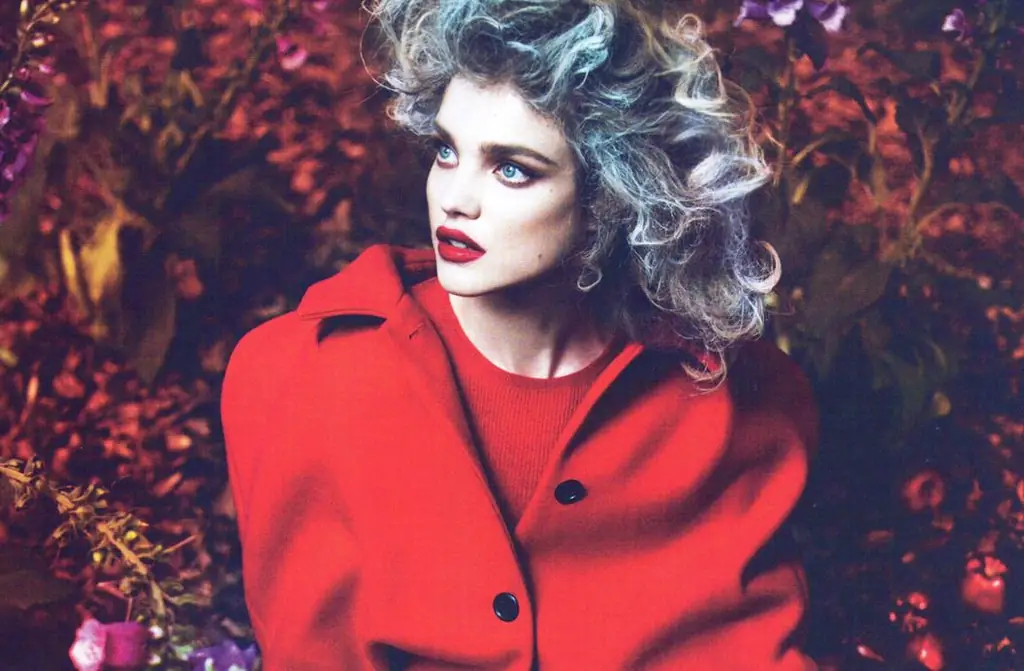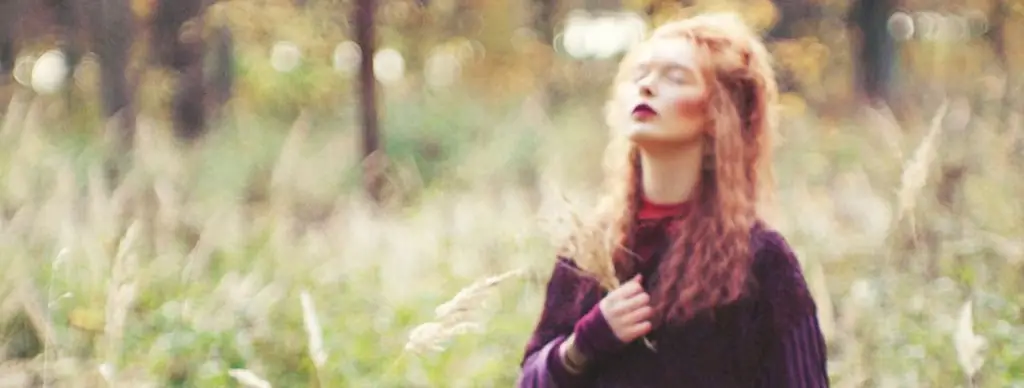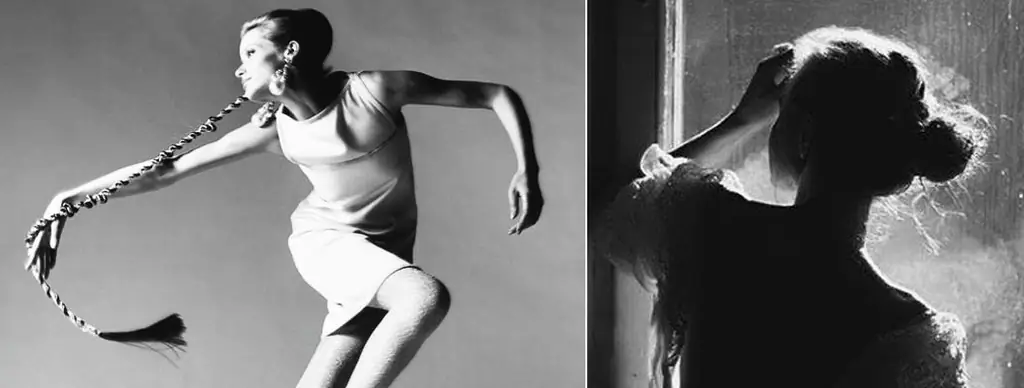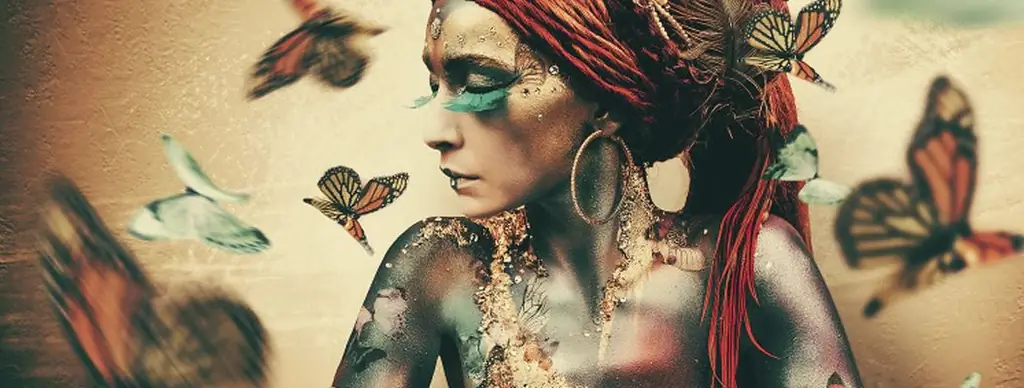- Author Adrian Jeff [email protected].
- Public 2023-12-17 05:06.
- Last modified 2025-01-24 14:09.

Emotional amplitude of the visual vector
The amplitude of changes in emotional states in the visual vector can be described using two conceptual dimensions. The first, fundamental, is the range of mental development of the visual vector "fear - love" …
System-vector psychology of Yuri Burlan divides the innate mental qualities of a person into eight different types, vectors, which bear the following names: visual, sound, oral, olfactory, urethral, anal, cutaneous and muscular.
In the visual vector, the brightest feeling from life is associated with the manifestations of emotions. It is a visual person who tends to empathize, regret, cry, be very scared, sincerely rejoice, love. Unconsciously, a person with a visual vector strives to change visual impressions, for example, he loves to travel, watch new films, and is fond of painting. The spectator is the only one who is able to see beauty and enjoy it.
The amplitude of changes in emotional states in the visual vector can be described using two conceptual dimensions. The first, fundamental, is the range of mental development of the visual vector "fear - love". This range is the main denominator in determining and understanding the stable state of the visual vector in a person, his ability to empathize, his general emotional potential. It can be used to characterize what emotions and feelings will prevail in a person's life when he interacts with other people.
The second conceptual dimension is a kind of subset of the first, and describes the nature of the change in emotional states within the first. At the peak of the emotional amplitude, the "upper" states are a wave of emotions, an inner storm, delight, full of feelings. The so-called "lower" states - those that occur when emotions decline to an even, calm feeling of balance, such as sadness, longing, sadness.
"Upper" and "lower" emotional states of the visual vector
System-vector psychology of Yuri Burlan says that a visual person, like representatives of other vectors, is born in an archetypal state. Then, before the end of puberty, human development occurs, that is, the exit from the archetype and the development of innate vector properties to one of the following levels: inanimate, plant, animal, human. The highest level of development of the visual vector is human.
Depending on the degree of development (or underdevelopment) of the vector of emotions, which such people strive for, will differ. It can be a deep feeling of love and compassion, and a sense of beauty, and delight in showing oneself, and even rapture with fear of the unknown and deadly.

The principle of pleasure in the visual vector is the same - the desire to experience vivid emotions. The only difference is what exactly to fill: sensory experiences associated with other people, which corresponds to a high level of development of the visual vector, or various kinds of emotional swings, as is the case with representatives of the visual vector in an undeveloped state or those who are under stress. who cannot reach their potential.
Emotional swings are an archetypal program of the visual vector, frequent changes in states from demonstrative exaltation to a state of fear. Emotional swings can have various forms of manifestation: emotional blackmail, hysteria as a demand for self-love, superstition as a need to feel fear.
Exaltation and melancholy as the amplitude of the states of an undeveloped visual eye
The “upper” state of euphoria, exaltation is an emotional flurry, not shaped into feelings. A person feels an inner rise, an impulse that pushes to bring this state out. But in the case of inability to bring his feelings out, to create an emotional connection with another person, in the absence of creative skills, these emotions remain “burned out” inside, or a person seeks to attract attention to himself in every possible way, behaves intemperate, demonstratively, hysterically.
The state of exaltation gives the greatest pleasure to the viewer who has not learned to formulate his feelings. A person experiences delight, a sharp rise in mood, causeless joy, when he wants to laugh, sob, run somewhere, suddenly fantasy begins to work violently, images flash in his head.
For the states of exaltation, the opticians go to the sects to the inductive skin-sound or skin-sound-oral preachers. Some people with a combination of cutaneous and sound vectors are able to induce, i.e. "Infect" other people with your idea. When an idea is generated by an unhealthy state of the sound vector, for example, by the conviction that one is God's chosen one, then this kind of induction is psychopathological, harmful to others. Such people often create sects in which, like a magnet, they attract emotionally unstable individuals with a visual vector.
The fanatically convinced of his idea, the leader of the sect "introduces" the visual flock to the mystery of the "divine principle", and thus brings their visual fear to a state of faith in a higher power, which can lead them to an exalted frenzy. If such a person is also the owner of the oral vector, then his ability to persuade is many times stronger. Vivid examples of such an accentuated effect of skin-sound-oral preachers on people with fear in sight can be seen in the churches of charismatics.
The state of exaltation, vivid demonstrativeness, hysteria gives the visual person a short-term feeling of fullness and joy, but it is absolutely aimed at emotional self-satisfaction, while other people act as a kind of catalyst.

As a rule, after being in exaltation, there is a sharp internal emotional decline into melancholy - a "lower" state, a sharp decline in mood, accompanied by negative feelings for oneself, emptiness, self-pity. Melancholy is a negative "lower" state that drags on, winds up with negative emotions, like a snowball from which it is difficult to get out. In a state of melancholy, a visual person negatively experiences his fate, focuses on worries for himself.
Feeling of love and grief of sadness as a state of developed vision
Part of the visual archetype is the inner state of fear. The root of all visual fears is the fear of death. What feelings and emotions a spectator can experience in his life depends on correct development, that is, on the skills acquired in childhood to take out his fear for himself outside, on the timely education of feelings. The development and education of feelings in a visual child begins with emotional ties with parents, reading classical literature, expressing their feelings creatively, for example, through drawing, participation in a children's theater group.
A visual person who has learned to experience sincere feelings of compassion for other people, a desire to help them when they need it, gradually transforms his inner state of fear for himself into a state of love for others. Love is a higher-order visual feeling directed at another person (sometimes at an animal or other object), as opposed to fear, which is centered on oneself.
Love as a state matures inside a person, and in its manifestation it can be directed to the whole world, including feelings for objects of animal and even plant and inanimate nature. Like exaltation, this "upper" state cannot last long at the peak of emotional elevation. The state of emotional uplift, one way or another, regardless of the development of a person, is replaced, the emotional amplitude goes down.
The transition from the “upper” state of “love” to the lower states of the visual vector in a developed visual eye is usually manifested not by melancholy, but by a feeling of light sadness, sadness. An example of such a feeling is sadness about a person who has passed away, with whom there was close emotional contact. This feeling, depending on the vector set of a person, can be connected to feelings of other vectors, such as nostalgia in the anal vector associated with touching memories of the abandoned homeland, and more.
Unlike the state of melancholy, which has an obvious negative effect, sadness and sadness do not have that oppressive and aggravating effect and pass more like a cleansing emotional experience for a visual person. In a state of sadness and sadness, as well as in anguish, the visual person is inclined to cry, but in the case of longing, these are tears of bitterness and self-pity, which are hysterical and devastating in nature, and in the case of sadness and sadness, these are tears of spiritual purification.
Tears are not only a physiological direct initiation of the erogenous zone, but also a necessary experience for the visual person. Tears, caused by an inner experience for another, "cleanse the soul", prepare emotionally for the next changes of states.
Educating the senses
If you notice in your child's behavior:
- demonstrativeness,
- a special craving for emotional communication,
- fearfulness (fear of the dark, fear of being left without parents, fear of dying),
- the ability to turn a play with dolls and soft toys into a real show,
- a tendency to show pity for insects and flowers, etc.,
then nature has endowed your child with a visual vector.
A visual child, in addition to instilling basic adaptation skills, needs education of feelings. You can create interest in emotional development with the help of literature that makes you empathize with the heroes. These can be stories about animals and children, for example, "Children of the Underground" by V. Korolenko, "Mowgli" by R. Kipling.
Emotional extraversion - empathy, compassion - frees the viewer from fear for himself, gives a balanced biochemistry of the brain, allows empathizing with other people in their troubles, difficulties and tragedies. After the first books read by mom or dad, the child will naturally reach out to get this pleasure (a real love experience in a purely visual sense!) Over and over again. In this case, it is easy to push him to read on his own.
The system-vector psychology of Yuri Burlan recommends reading the fairy tales by G. Kh. to visual children and adolescents. Andersen, books by the classic of French romanticism V. Hugo and others …
The big mistake of modern parents, especially in Russia, that boys should not cry, leads to disorders in the development of the visual vector in boys. “Don't cry!”, “Why did you let the nuns go?”, “Whine like a woman,” - with such phrases, parents try to knock out the “nonsense” from the visual boy, make him strong, powerful, courageous and able to stand up for himself. In fact, through the denial of visual properties that have not yet been developed in a child, and manifested at the level of hysteria or demonstrativeness, parents will not be able to instill in a child courage and volitional stability.
On the contrary, a traumatized visual child is more susceptible to fears than others, and therefore less able to socialize and "stand up for himself." Often, the life scenario of such a person in adulthood is built around the struggle with their own fears, often through attempts to save themselves from potential attacks on themselves, while verbally attacking others for no reason, through demonstrative behavior.

If the parents create adequate conditions for the development and implementation of the visual vector, the child, if it is a boy, learns to adequately realize his visual properties, gaining greater psychological stability, often even the ability to respond to aggressive influences, to protect himself and others. However, the visual boy is definitely not a fighter and his ability to fight is much inferior to children without a visual vector.
Parents should understand that the sensory development of a visual child through fiction, through the skills of creating and maintaining an emotional connection, through the formation of humanistic values is not only a way to get rid of a child from states of fear and hysterical behavior, but also a reliable foundation for a future mature and realized in society personality.
How the viewer to realize himself
In conclusion about the "upper" and "lower" states of the visual vector, it is important to note the following. When the object of experienced emotions, both in the "upper" and in the "lower" state, is outside, and emotions are formalized into feelings or creative work, then they do not harm the visual person himself and the people around him. In the case when he himself is the object of the visual person's experiences, this manifests itself negatively both for himself and for those around him.
If you track in yourself an uncontrollable change in mood from euphoria to failure melancholy, when it seems that "the world has collapsed", then the first constructive application that can be found for these states is to shape them into feelings, build emotional connections with other people. Or activate the existing potential, realizing your emotional amplitude in creativity.
Vivid emotions, of course, brighten life, fuel the interest to experience them again and again every time. When a visual person uses his emotional amplitude in creativity (actress, artist, designer), in a profession that disposes of a sympathetic attitude towards other people (doctor, teacher), in volunteerism or in other activities related to the manifestation of compassion, then the desire to experience the state of "love" becomes for him a source of inspiration for self-realization to the fullest throughout his life. This is the path to real natural and natural happiness for the visual person.






